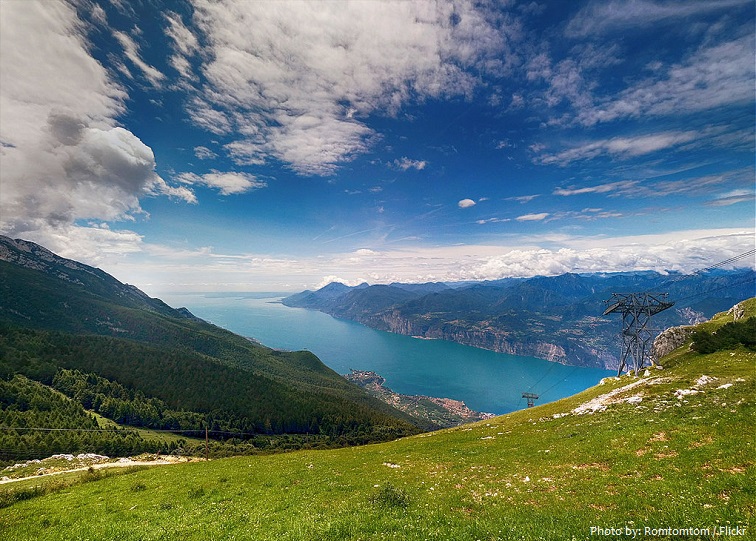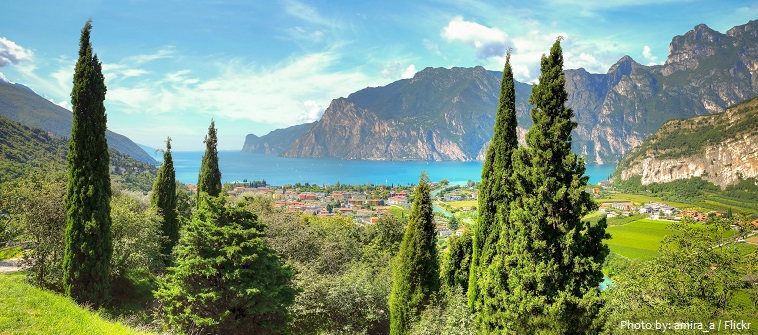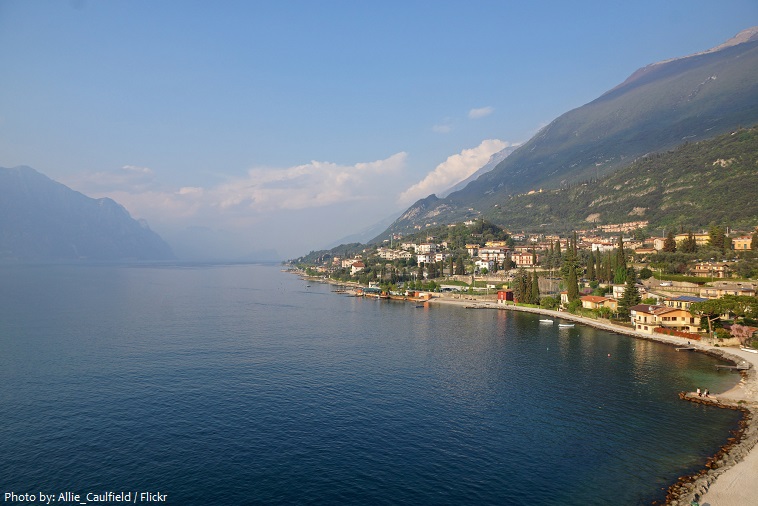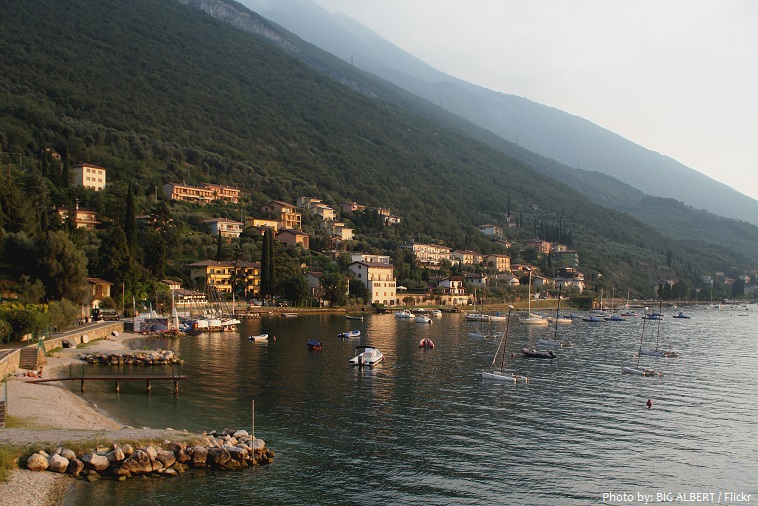Lake Garda is the largest lake in Italy.
The lake is 51.6 kilometers (32.1 miles) long and 16.7 kilometers (10.4 miles) wide at its widest point.
It has an area of 370 square kilometers (143 square miles), making it the largest lake in Italy.
The shape is typical of a moraine valley, probably having been formed under the action of a Paleolithic glacier.
Its surface is 65 meters (213 feet) above sea level.
The lake’s average depth is 154 meters (505 feet), while the maximum depth is 346 meters (1,135 feet).
Volume of water within the lake is 50.35 cubic kilometers (12 cubic miles) or 50,35 trillion liters (13.3 trillion gallons).
Lake Garda has a retention time (the measurement of time that water spends in a particular lake) of 26.8 years.
It has about 160 kilometers (100 miles) of shoreline.
The lake and its shoreline are divided between the provinces of Verona (to the south-east), Brescia (south-west), and Trentino (north).
The name Garda, which the lake has been seen referred to in documents dating to the eighth century, comes from the town of the same name. It is the evolution of the Germanic word warda, meaning “place of guard” or “place of observation.”
Glaciers formed this alpine region at the end of the last Ice Age.
Although traces of the glacier’s actions are evident today, in more recent years it has been hypothesised that the glacier occupied a previously existing depression, created by stream erosion 5 to 6 million years ago.
Lake Garda, with its mild climate and perfect water temperature, seems but a patch of sea set between the Alps and northern Italy’s Pianura Padana.
The picturesque little town of Sirmione sits at the end of a long promontory reaching out into the lake from its southern shore. It’s hard to find a more charming entrance to a town – across a moat on a drawbridge and into the forecourt of a castle that looks as though it had been built for a movie set. The water-surrounded fortress was constructed in the 12th century by the Scaligeri, Verona’s ruling family, as part of their defensive network against Milan and was later maintained by the Venetian empire.
Grottoes of Catullus is the name given to the ruins of a Roman villa which was built at the end of the 1st century B.C. and the beginning of the 1st century A.D. at the northernmost end of the peninsula of Sirmione on the southern shore of Lake Garda.
Poets and politicians, divas and dictators, they’ve all been drawn to captivating Lake Garda (Lago di Garda). In fact, 7% of all tourists to Italy head for the lake’s shores, taking to its wind-ruffled waters in the north and village- and vineyard-hopping in the south.
Garda’s economy is based off tourism. Nearby, there is Gardaland, one of the most famous theme parks in Italy. At the northern end of the lake, the towns of Riva and Torbole are famous for winds that attract people who sail, windsurf & kiteboard.
The particularly mild climate favours the growth of some Mediterranean plants, including the olive tree.
Lake Garda is ideal for a tailor-made vacation, whether for nature lovers, athletes, or history and culture buffs.
Nearby, there is Gardaland, one of the most famous theme parks in Italy.




